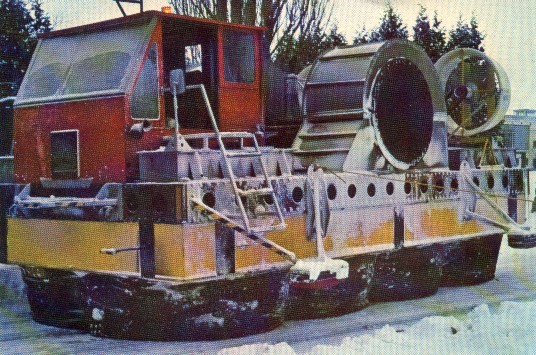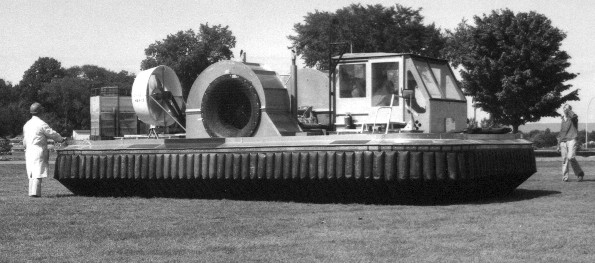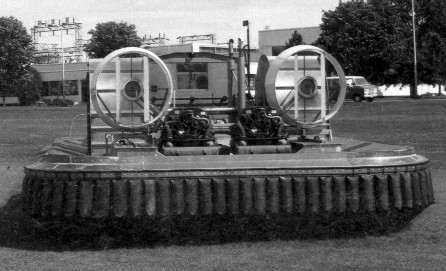National Research Council Of Canada
CASPAR

While
not intended for manufacture, CASPAR is included here because of its
significance to the Canadian hovercraft industry. CASPAR stood for Cushion Air
System Parametric Assessment Rig and was developed by the late Howard Fowler of the
Engine Laboratory in the Division of Mechanical Engineering of the National
Research Council of Canada.

CASPAR was a research acv equipped with comprehensive
instrumentation and designed to be fitted with easily interchangeable skirt
systems. It was made full scale to eliminate scale effects and to be
operated of a wide range of real terrain but under laboratory standards of
experimental precision and control.

CASPAR's lift system was a 200HP automotive engine driving two
centrifugal fans vertically mounted on a transverse, belt driven shaft.
The two thrust units were produced by Hoverproducts and each were powered by
40HP air cooled Volkswagen engines that produced a total of 480lbs of thrust.
Among the skirt systems to be tested were a Bertin style
multicell system (as seen in the top photograph) and an HDL segmented system as
seen in the above photos. A planned BHC bag and finger and simple bag
system were never tested
.
NRC also conducted full scale experiments with a highly modifed
hull from an MHV Spectra-II hovercraft as
seen above.
Particulars:
Length: 20' Width: 10'
Empty Weight: 7,000 lbs
CASPAR was made by:
National Research Council of Canada
Engine Laboratory, M-7
Ottawa, Ontario
K1A 0R6
|
